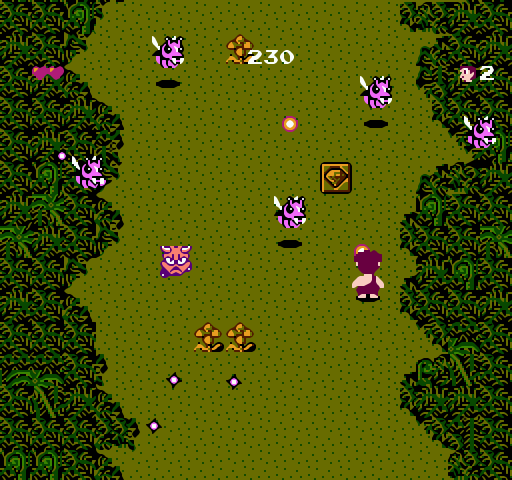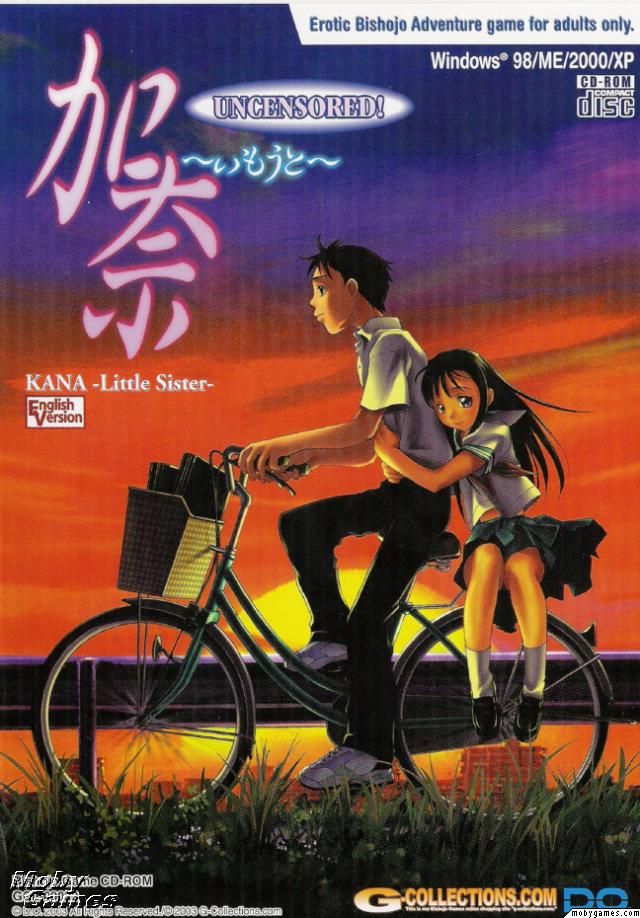 Adventures of Dino-Riki is a NES game similar to nearly every other NES game. It’s a top-down shooter set in prehistoric times that has you killing dinosaurs. How come nobody ever tweaks the formula? Is there a game where you have a stack of adrenaline hypos, and you bring dead monsters back to life by shooting them?
Adventures of Dino-Riki is a NES game similar to nearly every other NES game. It’s a top-down shooter set in prehistoric times that has you killing dinosaurs. How come nobody ever tweaks the formula? Is there a game where you have a stack of adrenaline hypos, and you bring dead monsters back to life by shooting them?
This game is hard. 80s hard. You can only have so much game on a NES cart, so developers compensated by designing games that killed you like their name is Inigo Montoya. Die, restart, die, restart. That’s how you stretch out half an hour of gameplay.
The game’s punishing difficulty is exacerbated by various lovely design decisions. You lose all your weapons and powerups when you die. And the screen scrolls upwards at a constant rate, so timing a jump requires you to carefully calculate your forward momentum plus the scroll rate. I’m pretty sure the Iraqi Royal Guard used this game to train soldiers to aim Scud missiles.
My enthusiasm for The Adventures of Dino-Riki is just flowing off the page, so the question remains: why did I play it? And why do I remember it?
Well, it has some positive qualities. For one (and this is huge) it’s not set in space. Instead of boring starry backgrounds you get actual things to look at. Trees. Bushes. Grass. It’s wonderful.
And the “real life” setting means you can apply logic to it in a way that you usually can’t for. If you fall down a hole, you die. You aren’t getting attacked by random phallic shapes but by recognisable creatures. Certain things make immediate logical sense. If you fall into a hole, you die. To compare, it was never clear to me why some objects in Star Force killed me while others didn’t. The controls in Dino-Riki feel tight and responsive (mostly, fuck you if you’re trying to fly). Some things take getting used to, such as the screen scrolling forward at a certain rate, but get used to it you will. The boss fights are awesome. Laying down an extinction level event on a T-rex is fun no matter the game, whether it’s Turok or Tomb Raider or this one.
In short, Adventures is a typical Hudson Soft game. Screamingly unoriginal, and it charms and frustrates in equal measure. There’s moments where the game comes together and it becomes fun, then there’s all these moronic, inexplicable ideas that serve no purpose other than to cultivate in you a deep dislike of the game industry. How come your shots are blocked by vegetation, while enemies can shoot you through anything? How come you have to hold down the X button constantly to fly (even though you might be in the air for as long as five minutes?) How come your character has the faggiest death animation in documented history? He looks like he’s having a seizure.
Oh yeah, and can we talk about death animations.
Nintendo game developers. How do you depict death, given
- Nintendo’s famous censorship
- Terrible graphics
Platform games just have you fall off the screen. Vertical scrollers just have you blow up. But Dino Riki. They end up .
You could never call Dino Rikki a classic, and as far as I’m concerned it barely makes it to “decent game” status. Despite this, I can’t bash it too much. The NES catalogue is a refuse bin of horrible games and this one is actually fairly decent.
No Comments »
 Norwegian Wood is a slow book with only a little story, but I did not want it to be faster and I did not want there to be more. Someone once said that being a writer is like being a paleontologist digging up a dinosaur skeleton – and praying you don’t break anything as you transfer it from idea to paper. This book constitutes perfect paleontology. Few books are as precise and well realised.
Norwegian Wood is a slow book with only a little story, but I did not want it to be faster and I did not want there to be more. Someone once said that being a writer is like being a paleontologist digging up a dinosaur skeleton – and praying you don’t break anything as you transfer it from idea to paper. This book constitutes perfect paleontology. Few books are as precise and well realised.
However, parts of the Norwegian Wood skeleton are still underground. Even at the end there questions unanswered, and reasons and whyfors unexplained. Murakami must have decided that they were better off as secrets in the earth. What’s left is an understated but moving story of a young man courting a young woman in 1960s Japan. It’s a fiction book, but one feels justified in thinking that Murakami is transcribing some of his own experiences – he was a college student in Tokyo through this period.
Norwegian Wood has lots of exciting and dramatic and funny moments, all of them written in Murakami’s trademark understated style. Some writers leap and cavort for your attention. Murakami assumes he already has it. Some parts of the book feel real enough to make you uncomfortable. At his best moments, Murakami connects with the reader and makes him feel like he’s actually experiencing a love story, not just reading one.
The characters seem simultaneously realistic and exaggerated, from the disturbed Naoko to the charismatic Nagasawa to the friendly but unknowable Kizuki, whose death is the catalyst for most of the events in the book. They come across as types, but also as people. Main character Toru Watanabe is rudderless and confused, as many young people are, but he’s not uncaring. In fact, he cares too much. Away at college, away from his troubled girlfriend, he starts to feel attraction for another girl. This love triangle forces to make a choice, but that choice merely deepens problems and adds more responsibility to this young man. But that’s the way of things. Choices multiply into more choices, until eventually you’re middle aged and wondering what happened.
Norwegian Wood is a love story, but Murakami sublets narrative space to lots of other ideas. He gets in some shots at student activists, who want to overthrow the system until they graduate and need the system to supply them with a job. He gives Toru a funny roommate who is so likeable that I was saddened when he disappeared from the story. Music is often a prominent feature of this writer’s books, and you could put together a pretty comprehensive 60s compilation album from songs mentioned in Norwegian Wood.
Ultimately, you could view Norwegian story as a symbolic tale of a man facing two paths…and two girls. One is his past, the other his future. The ending is cruel for everyone involved, especially the reader, as he is cut out of one crucial piece of information about what happens to Toru.
But again, that follows from life. We can roll the dice and make decisions…and never know whether we chose correctly or not. I like Norwegian Wood a lot, maybe because it feels like I’m reading about myself.
No Comments »
 They talk about being a big fish in a small pond. Kana Little Sister is a whale imprisoned in a raindrop. In 1999, the hentai/eroge industry (“Do You Like Horny Bunnies”, “Battle Raper”, etc) released this very sad and emotional game, which is unlike any other h-title I’ve played or heard about. It has sexual content, but it could be deleted off the disc without affecting the experience. Kana exists to exposit one of gaming’s most tragic love stories, and tissues will now absorb other bodily fluids.
They talk about being a big fish in a small pond. Kana Little Sister is a whale imprisoned in a raindrop. In 1999, the hentai/eroge industry (“Do You Like Horny Bunnies”, “Battle Raper”, etc) released this very sad and emotional game, which is unlike any other h-title I’ve played or heard about. It has sexual content, but it could be deleted off the disc without affecting the experience. Kana exists to exposit one of gaming’s most tragic love stories, and tissues will now absorb other bodily fluids.
The game is about the coming of age of siblings Taka and Kana. Kana suffers from chronic renal failure. The expectation is that she will die at some point. Taka is initially resentful of Kana, but their relationship soon changes into friendship and then sexual intimacy. The game explores a lot of deep themes, like forbidden love and acceptance of death. I enjoyed the story, as well as Taka and Kana’s relationship, which is given beautiful frisson by the fact that it will not last.
The word “game” keeps coming up but Kana deserves it no more than the word “hentai”. This is the least interactive “game” I’ve ever seen, you just click dialogue options and get railroaded to one of six endings. Even though you play it less than you “play” an ink and paper RL Stine “Give Yourself Goosebumps” book, the minimalistic gameplay actually works to keep your attention on the story.
The art is nice. The music is repetitive and distracting. There’s no voice acting. The whole thing takes about five hours to complete. Kana’s an embodiment of function over form. It has little to offer if you want production values, it relies on content to woo the player. But honestly, I still have reservations about the whole “player” thing. Know what you’re getting into with this one: it’s not a game, it’s a vaguely interactive novel. And that might be a problem. Kana has one of the most emotionally affecting stories ever seen in a videogame, but if you judge “Kana” as a book…well, there’s a bit more competition there, no?
Kana is not great literature. It draws an emotional reaction in the same way a soap opera does. Sometimes the story’s twists and turns feel organic and natural. Sometimes they come across as phony and manipulative. And that’s a shame. Kana is too great to be a hentai game…but not good enough to cut it as a book. It’s stuck somewhere between worlds. Someone looking for porn won’t find it here, and it probably won’t win over highbrow lit fans. I’m reminded of a chrysalis. One one end a caterpillar, on the other end a butterfly…and in between there’s this really odd thing that doesn’t seem to belong.
Kana Little Sister is an interesting game, and certainly worth checking out. It will probably draw a “that’s it?” reaction from many players. It’s short, it’s crude, and it’s barely interactive. But when the story gets going, you will forget about all of that. In the tale of Taka and Kana there’s something very rare in a game storyline: inspiration.
No Comments »
 Adventures of Dino-Riki is a NES game similar to nearly every other NES game. It’s a top-down shooter set in prehistoric times that has you killing dinosaurs. How come nobody ever tweaks the formula? Is there a game where you have a stack of adrenaline hypos, and you bring dead monsters back to life by shooting them?
Adventures of Dino-Riki is a NES game similar to nearly every other NES game. It’s a top-down shooter set in prehistoric times that has you killing dinosaurs. How come nobody ever tweaks the formula? Is there a game where you have a stack of adrenaline hypos, and you bring dead monsters back to life by shooting them?

